The bank which is the biggest lender with 21% of the market share, in 2020 restructured UGX800 billion of loans, giving room to clients to get back on their feet. Thanks to this stitch-in-time, coupled with the consistent matching of interest rates with the Central Bank Rate enabled customers to regain stamina and by 2021 the value of restructured loans was reduced to UGX197 billion. By the end of 2022, this was further brought down to just UGX 14.5 billion. Bad loans in the same pool were just UGX 26 billion.
It is therefore no surprise that the bank saw a surge in customer growth, crossing the one million mark. This in turn led customer deposits to grow by 6.8 per cent year on year to UGX6.1 trillion from UGX5.7 trillion. This further allowed the bank to extend even more credit⏤ net loans and advances rose to UGX 4.1 trillion from UGX 3.7 trillion while total assets grew by 3.9 per cent to UGX 9.0 trillion!
The volume of borrowers also grew to 77,819 from 63,639 approved applications in 2021.
Extending more credit to the economy helped the bank grow its total revenue by 14.9% per cent⏤on the back of an 18.3% growth in net interest income from UGX498 billion to UGX589 billion⏤ from UGX 903 billion to UGX1.038 trillion. Net profit as a result went up 32.7% from UGX269 billion to UGX357 billion!
A great year by all means.
This is what former Pepsi CEO, Indra Nooyi referred to as Performance with Purpose⏤ the notion that companies can and should deliver great performance while keeping an eye on all of the stakeholders⏤ so that the company can do better, financially, by doing better for society.
According to Andrew Mashanda, the Chief Executive Officer of Stanbic Holdings Uganda Limited, the parent company of Stanbic Bank, indeed the Group’s solid performance is deeply rooted in its well-entrenched corporate purpose⏤ “Uganda is our home we drive her growth’.
“That is not only a statement of purpose, but it is our core belief, that we have deep in our hearts, and it drives, absolutely everything we do,” reiterates Mr. Mashanda.

Anne Juuko, the Chief Executive, Stanbic Bank Uganda iterates that the bank’s 2022 performance is a manifestation of the bank’s “contribution towards the economic recovery of its customers registered in 2022, most of which are a result of sustained dividends of Covid-19 interventions implemented between 2020 and 2021”.
“We continue to be profitable and do so while doing good,” she told stakeholders at breakfast to release results on March 28th at Kampala Serena Hotel.
This week, CEO East Africa Magazine delves into the 11 key drivers and or indicators of Stanbic Bank’s 2022 success.
UGX 272 billion paid in tax
For starters, every good citizen must be able to meet their fair share of tax responsibility. After all, driving Uganda’s growth requires supporting the government’s efforts to mobilise tax revenues to access the resources required to invest in key development projects and enable service delivery. In line with this, the bank, according to, Ronald Makata, the Interim Chief Finance Officer “paid a total of UGX 272 billion in taxes, making us the biggest taxpayer in the country’s banking sector”.
UGX 7.5 trillion in tax revenue collected on behalf of the government
Over and above emerging as the biggest taxpayer in the banking industry, the bank also leveraged its countrywide branch and agent banking network, as well as digital self-service channels to facilitate Ugandan taxpayers to pay their taxes more conveniently. As a result, Stanbic collected on behalf of the government, UGX 7.5 trillion, representing 33 per cent of total remittances to the government by the entire banking industry.
Credit to agriculture and other vital sectors of the economy
The bank in 2022 lent UGX437 billion, to the agriculture sector- one of the key drivers of the economy. Agriculture remains among the bank’s top 5 recipient sectors of vital credit. The other top recipients of Stanbic Bank’s lending in 2022 were households (retail customers) accounting for UGX 1.04 trillion, trade at UGX 663 billion, real estate at UGX 573 billion and transport/telecommunications at UGX 417 billion.
2 million Ugandans impacted through Stanbic’s preferential lending to SACCOS
Through its Savings and Credit Cooperatives (SACCO), a low-cost finance and capacity-building programme, targeting village saving groups and the unbanked population, Stanbic Bank has partnered with over 6,122 SACCOs with a combined membership of nearly 2 million Ugandans across the country. The SACCOs were able to access UGX40 billion in loans through a multi-stakeholder Economic Enterprise Restart Fund (EERF) at interest rates as low as 10 per cent per annum- perhaps the lowest lending rate in the market!
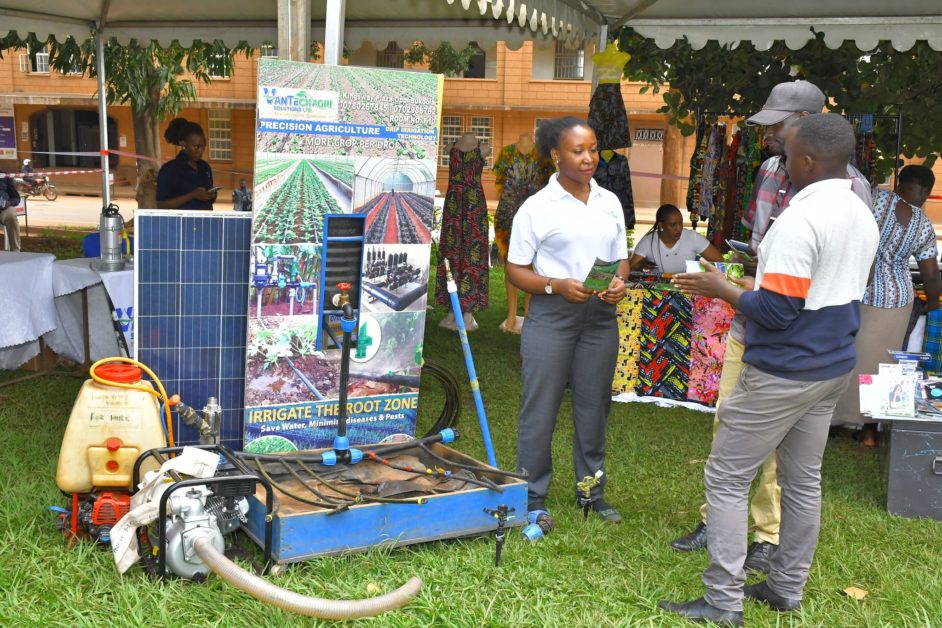
“Through our partnership with SACCOS, we are bringing financial services to the Wanainchi, at a price they can afford, in an approach they understand and at a place they can get to easily. We are solving many problems in one proposition,” explains Ms. Juuko.
Privileged lending and capacity building for women-owned businesses through Stanbic for Her programme
Women are generally underbanked and least likely to get access to credit in Africa and Uganda is not any different. To uplift women, the bank in 2022 to mark International Women’s Day 2022, launched its flagship Stanbic for Her Program. The programme was launched with support from the International Finance Corporation (IFC).
“In this proposition, we unashamedly favour women in business. We train them, we equip them. We open markets for them. And above all, we give them financial services at a reduced price and related transactional fees. We pull their leg up because we know when a mother or woman in a home is financially well, that home is in a better state” Ms. Juuko explains the rationale behind this programme.
The programme aims at increasing women’s access to financial services and ‘bringing every woman a Step closer to Her dreams’ through low lending rates, at 15.5% (fixed) as well as capacity building. it is majorly targeted at vulnerable women such as widows and the disabled, as well as street vendors, single mothers and start-ups.
“It gives us great pleasure to also report that over 11,000 small businesses have opened accounts with us in the past year and that over 1,800 of them have already benefited from access to affordable credit at rates as low as 15.5 per cent, to the tune of over UGX 30 billion,” Juuko proudly reports, adding: “I am also pleased to report that this is one of our best-performing credit books.”
Uplifting the financial health of Uganda’s healthcare workers
During the Covid-19, pandemic, as a gesture to reward and motivate health workers who were going the distance to save lives, while putting their own at risk, the bank, partnered with Uganda’s Ministry of Health to extend affordable financial services to healthcare workers such as doctors, nurses etc.
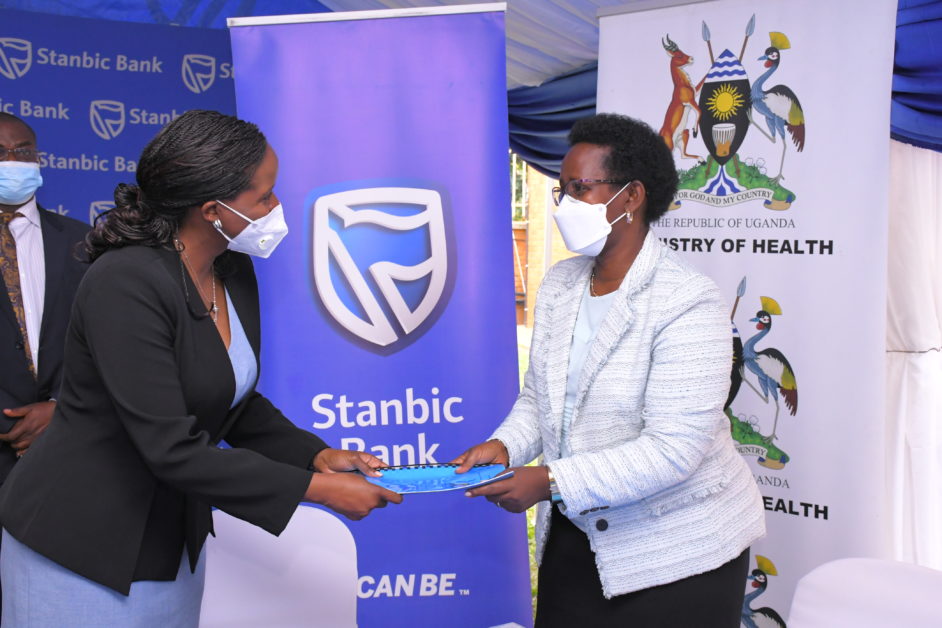
“Stanbic Bank is lending to them at a reduced cost, and more importantly, we give them free banking services. Under this programme, we have disbursed over UGX85 billion in affordable loans to over 6,000 health workers. Our health workers are educating their children, they are building houses for themselves and they are investing and they are improving their financial future. This is also another way we can control the brain drain on our human resources as a country,” Juuko reported to stakeholders.
Financial inclusion, creating low-cost value for customers through Flexipay
Juuko, says the bank is driven by a “belief that it is our duty to create low-cost banking value propositions for our customers”.
“Banking must be affordable. And it is our job to make banking affordable and inclusive” she vows.
The bank one and a half years ago launched Flexipay, a mobile-based digital banking solution; no matter the type of phone. Flexipay is a seamless all-in-one digital lifestyle solution that can be accessed by all individuals, businesses and corporates.
“Through Flexipay, we are bringing the bank to you. But to do that and do it meaningfully, it has got to be affordable. Our Flexipay transactions are zero-charged. We will not charge transaction fees as Stanbic. You can receive money from anywhere, any mobile network, and you can send money to any mobile network, and now you can send money to any bank within the country. By the end of this year, you will be able to send money to any part of the world off Flexipay. In addition to that, we are introducing low-cost lending products onto your phone,” she reckons.
“With Flexipay, you need not come to the branch or the agent. In the comfort of your home, with your phone, regardless of the make, it needs not to be a smartphone; on the simplest technology, with your National ID, you can open a wallet and start transacting. And within the next few months, we’ll be able to save we’ll be able to borrow and much more,” she adds.
Thanks to the convenience and simplicity that is Flexipay, in slightly less than two years, Stanbic has been able to register 500,000 Flexipay wallets/accounts and 33,000 merchants. This is a 500% year-on-year growth.
Flexipay is implemented by agent banking which in 2018 only used to account for 5.1% of all transactions, but in 2022 accounted for 38.2% of transactions.
“Agency banking has changed the way customers transact. Customers don’t want to come to the bank anymore. Customers want to transact at the nearest point outside their house; outside their office, on their way home etc- which is agency banking. The agency banking platform has taken on a whole new meaning and importance in our lives. We will invest time, effort and resources to make it an enjoyable experience for our customers,” Juuko avows.
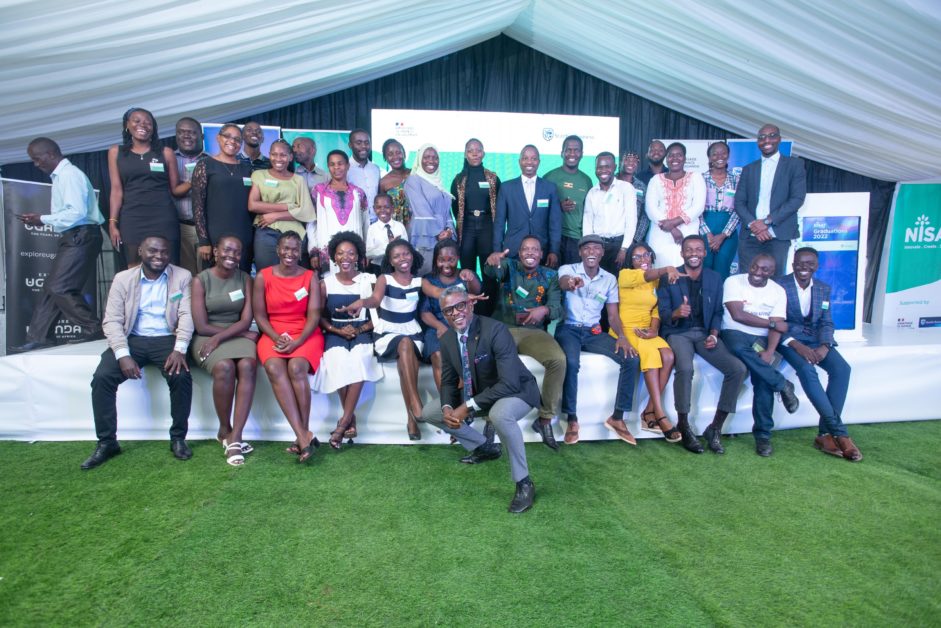
SME Capacity Development through the Stanbic Business Incubator
Medium and Small Enterprises are the heart and engine of Uganda’s economy but many are performing below their potential because of various challenges. Throughout 2022, Stanbic Business Incubator continued to execute its mandate, as a beacon of SME capacity development in Uganda. In 2022 alone, a total of 1,038 SMEs were trained, bringing to over 3,000 the number of SMES trained since the Stanbic Business Incubator was set up. In 2022, a new focus on ecotourism and climate-smart agriculture was embedded into the programme.
In a continued effort to build more financially knowledgeable Ugandans, the bank’s financial literacy programmes reached over 34,585 customers.
Creating jobs and skilling more Ugandans
The bank in 2022 continued to “progress on its stated objective of providing meaningful employment opportunities for Ugandans”. The bank hired more talent, increasing its headcount from 1,756 employees to 1,907.
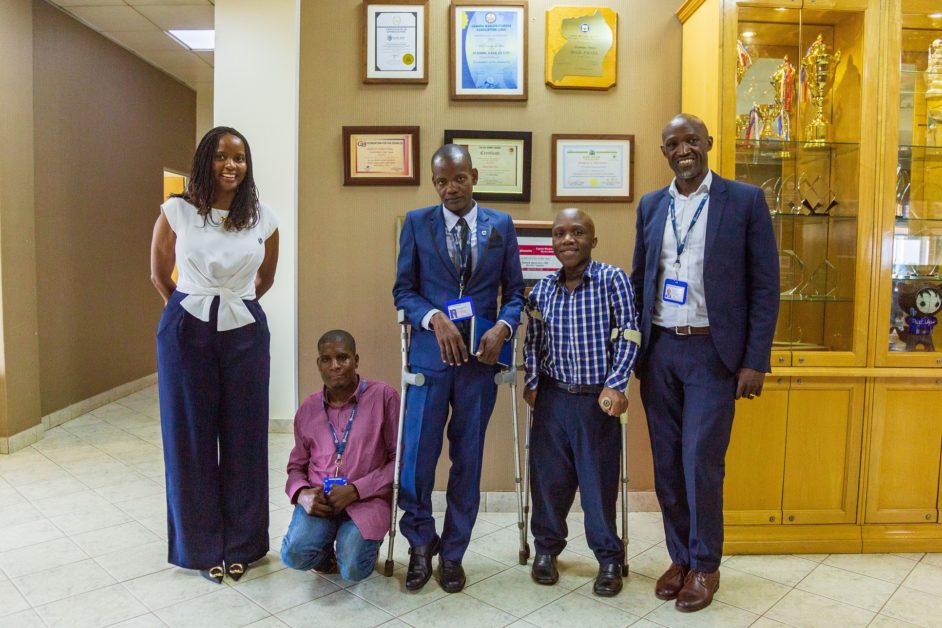
“We also assigned ourselves a new target on diversity and inclusion where in the medium term we seek to have 10- per cent of our total workforce constituted of people living with a disability. This new target is inspired by our success in gender equality which was recognised and rewarded in 2022 with the Gold Gender Equality Seal by the United Nations Development Programme in partnership with the Private Sector Foundation,” Juuko proudly says.
In recognition of the bank’s various best pre-actives in people management, the bank was recognised with the Best Practice Award in Diversity and Inclusion at the just-ended Prudential HR Best Practice Awards 2023.
Giving back to the community
In 2022 Stanbic Bank continued to execute its corporate asocial investment agenda, mainly under the education, maternal health and environment pillars.
Under the National Schools Championship, the bank impacted 260,000 students, 100 schools and 3,000 teachers. Still, under the education pillar, the bank supported 75 students of Busitema University with vocational skills training.
The bank’s maternal health programme reached 78,000 mothers and babies, in 22 health facilities across the country. The bank also raised an additional UGX270 million from its partners to support these various causes.
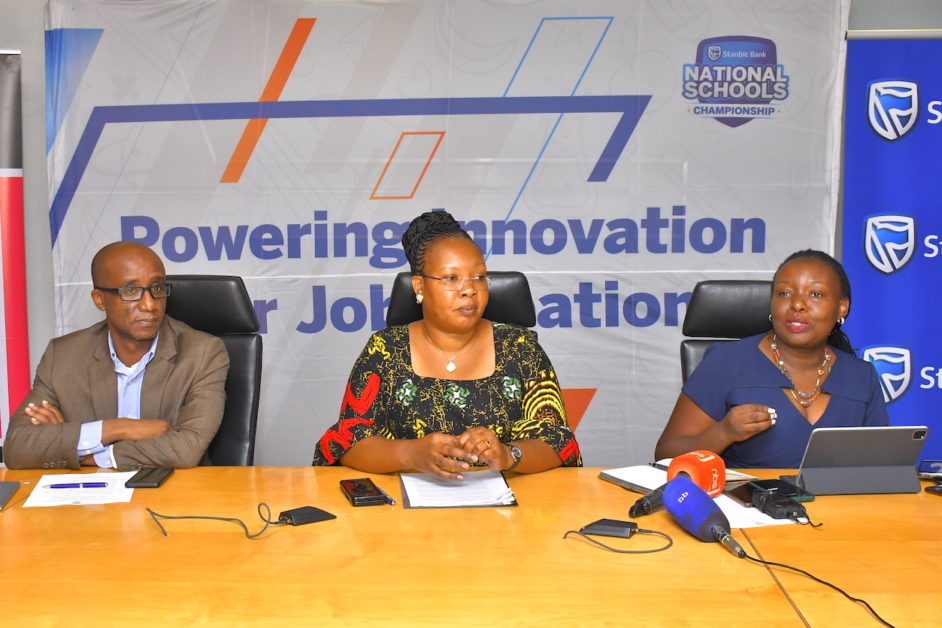
Under the environment pillar, the bank planted 70,000 trees in partnership with the Ministry of Water and Environment and private sector partners under the Running Out of Trees (ROOT) campaign. Working with Next Media Group and partners, the bank also run a responsible plastics usage and disposal campaign that reached 330,000 people.
In furtherance of the environment/green agenda the bank’s green financing solution financed over 20 solar businesses. In addition over 1,635 clients underwent pre-funding environment and social assessments.
Uganda’s most awarded and respected bank
For sticking to its purpose and executing excellently Stanbic Bank not only remains a market share leader with 31% of profitability, 19% of deposits, 21% of lending and 42% of the industry balance sheet, but it also well respected domestically and internationally.
Some of the accolades won by the bank include Best Innovation In Retail Banking 2022 by the International Banker Magazine; Global Finance Safest Bank Award in Uganda 2022 by the Global Finance Magazine and Most Trusted Banking Brand in Uganda 2022 by the Global Brands Magazine March 2022. Locally, the bank has among other recognitions, won the Best Bank in Uganda, Platinum, at the Consumer Choice Award 2022 and the Best Practice Award in Diversity and Inclusion at the Prudential HR Best Practice Awards. The bank’s diversity and inclusion agenda has also received a Gender Equality Seal from the United Nations Development Programme (UNDP).
 Northern Corridor States to jointly mobilise funds for fast-tracking Standard Guage Railway Project
Northern Corridor States to jointly mobilise funds for fast-tracking Standard Guage Railway Project